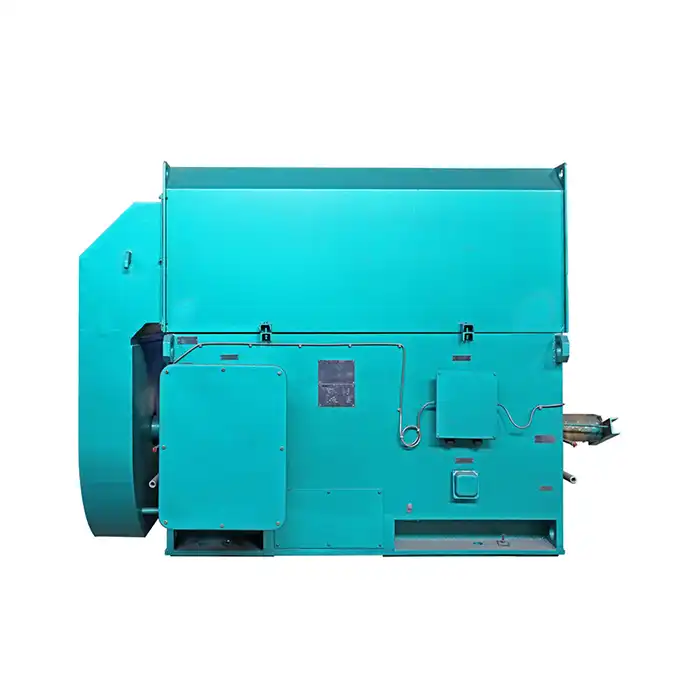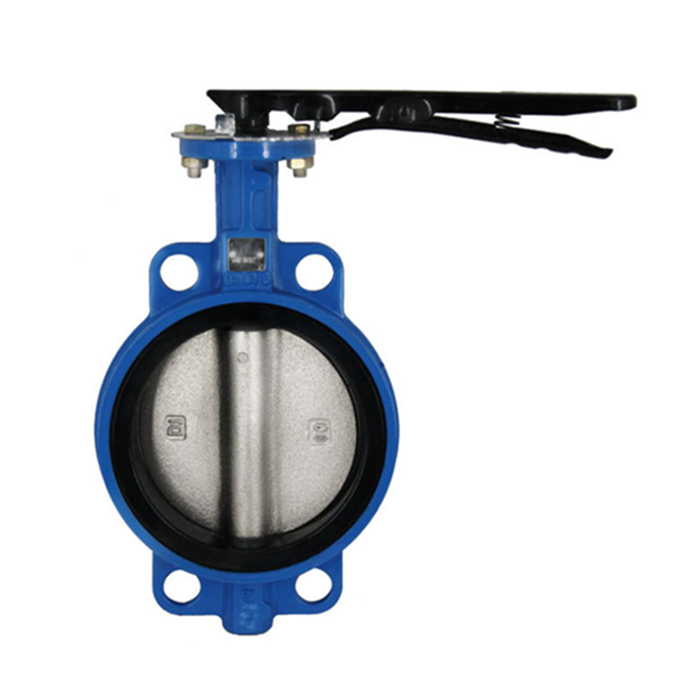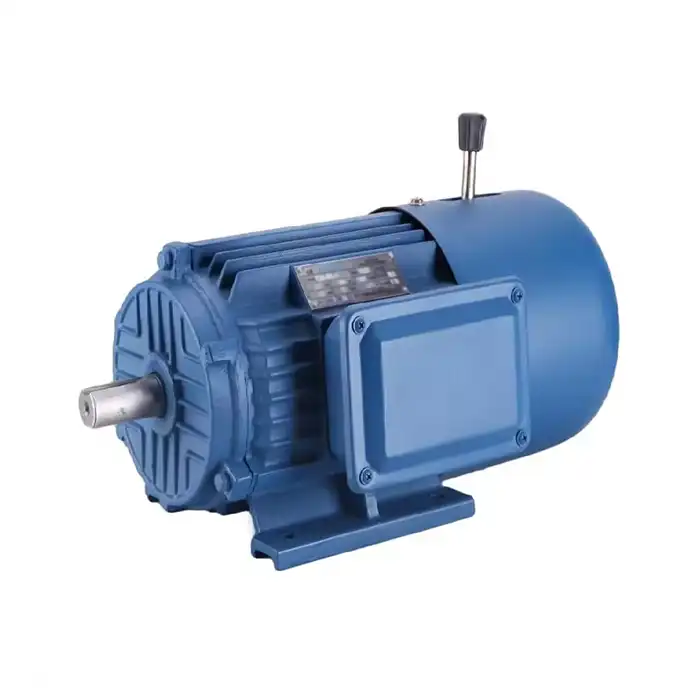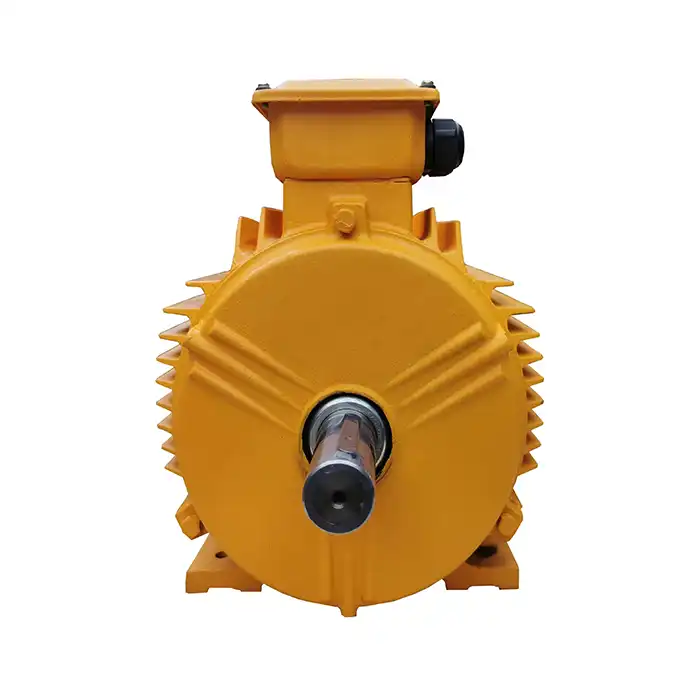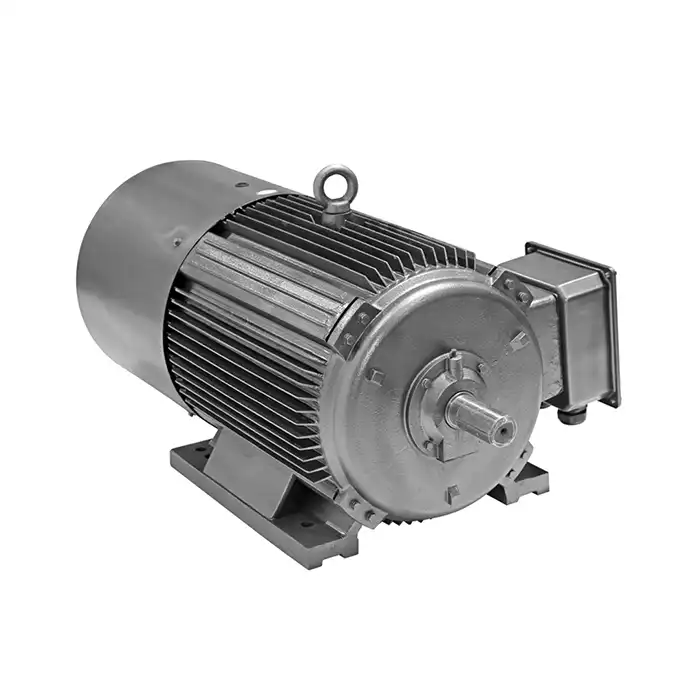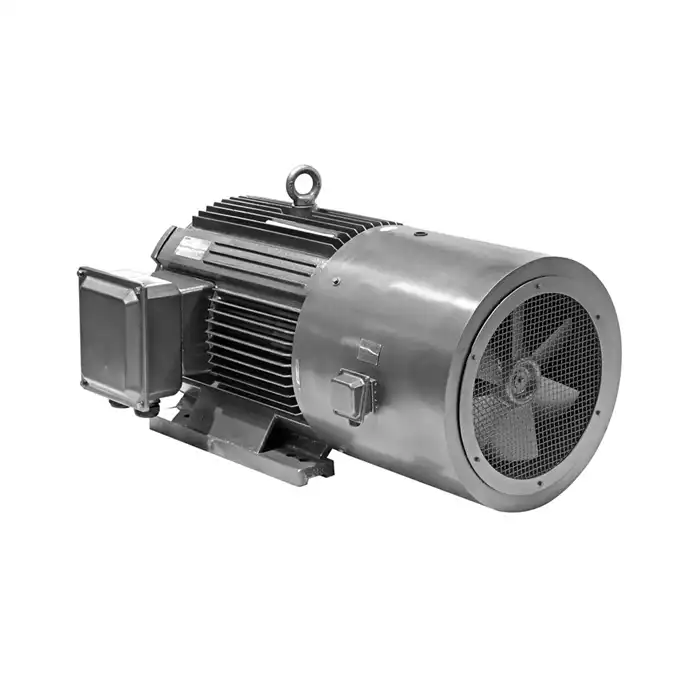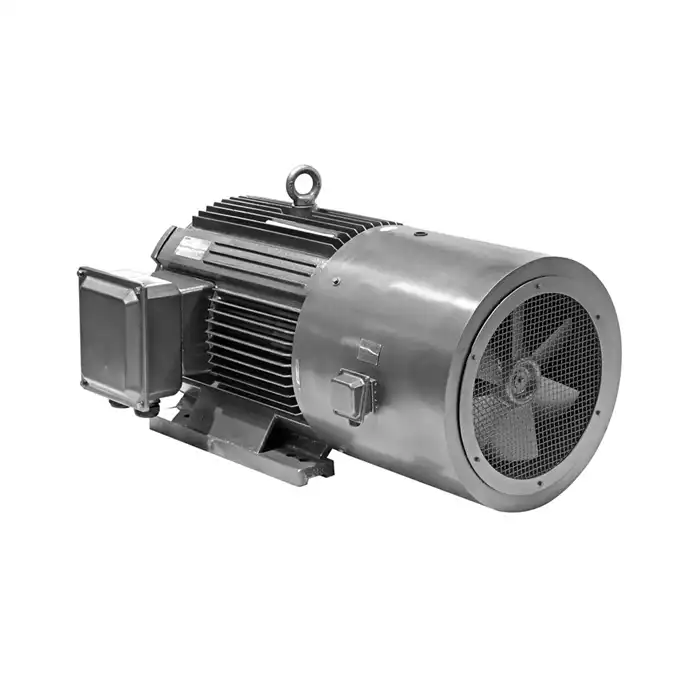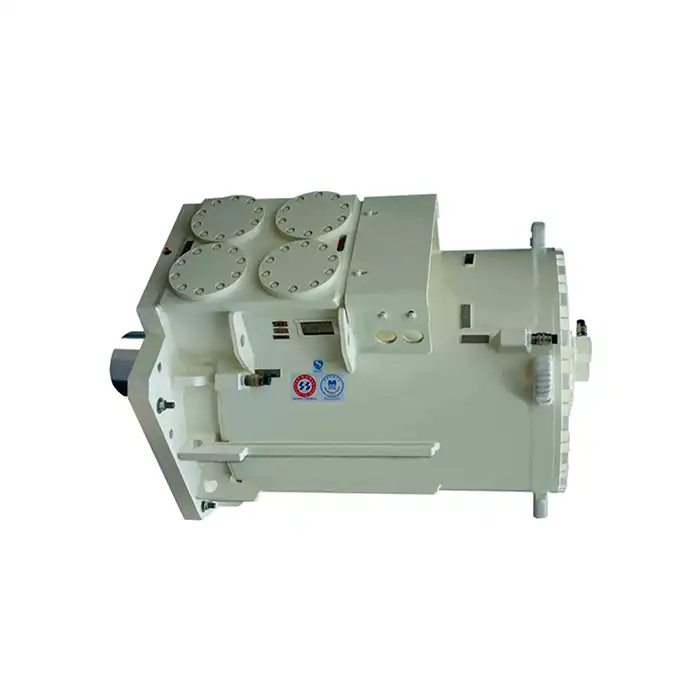How Do Copper Windings Improve Efficiency in Induction Motors?
Induction motors are vital components in many industrial applications, powering everything from compressors and pumps to cutting machines and transportation machinery. At the heart of these motors lies a crucial element: the windings. Among the various materials used for motor windings, copper stands out as a superior choice, particularly in medium voltage induction motors. This article delves into the ways copper windings enhance the efficiency of induction motors, exploring their conductivity, heat dissipation properties, and the long-term energy savings they offer.
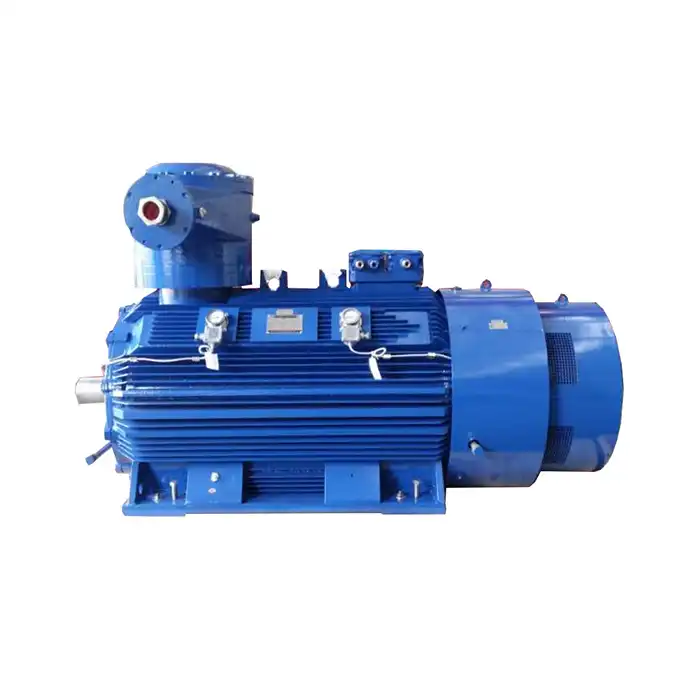
| Voltage Range: | 3 kV - 11 kV |
| Power Output: | 185 kW - 1800 kW |
| Speed: | 3000 rpm, 1500 rpm, 1000 rpm, and custom options |
| Protection Class: | IP55 (Standard), IP56, IP65 (Optional) |
| Cooling Method: | IC416 |
Conductivity: Copper vs. Alternative Materials
The efficiency of an induction motor largely depends on the conductivity of its windings. Copper, with its exceptional electrical conductivity, outperforms many alternative materials in this aspect.
Superior Electrical Properties of Copper
Copper's atomic structure allows for easy movement of electrons, resulting in lower electrical resistance compared to other commonly used materials. This property is particularly beneficial in medium voltage induction motors, where efficient power transmission is crucial.
Comparison with Aluminum
While aluminum is sometimes used as an alternative to copper due to its lower cost, it falls short in terms of conductivity. Copper offers approximately 60% higher conductivity than aluminum, which translates to reduced energy losses in the motor windings.
Impact on Motor Performance
The superior conductivity of copper windings results in: - Reduced electrical losses - Improved power factor - Enhanced motor efficiency across various load conditions
These benefits are particularly noticeable in applications requiring high power output, such as in medium voltage induction motors with power ranges of 185-1800 kW.
Heat Dissipation: Impact on Motor Lifespan
Efficient heat dissipation is crucial for the longevity and performance of induction motors. Copper windings play a significant role in this aspect, contributing to better thermal management.
Thermal Conductivity of Copper
Copper not only excels in electrical conductivity but also boasts superior thermal conductivity. This property allows for more efficient heat transfer from the windings to the motor's cooling system, preventing localized hot spots that can degrade insulation and reduce motor lifespan.
Temperature Rise and Motor Efficiency
The use of copper windings helps maintain lower operating temperatures in medium voltage induction motors. This temperature control is crucial for: - Preserving insulation integrity - Reducing thermal stress on bearings and other components - Maintaining consistent motor performance over time
Long-term Reliability
By facilitating better heat dissipation, copper windings contribute to: - Extended motor lifespan - Reduced maintenance requirements - Improved overall reliability, especially in demanding industrial applications
These factors are particularly important for medium voltage induction motors operating in challenging environments or continuous duty cycles.
Energy Savings: ROI of Copper Windings
While the initial cost of copper windings may be higher than some alternatives, the long-term energy savings often justify the investment, especially in medium voltage induction motors.
Efficiency Gains Over Time
The higher efficiency of copper-wound motors translates to significant energy savings over the motor's operational life. For medium voltage induction motors in the power range of 185-1800 kW, even a small percentage increase in efficiency can result in substantial energy cost reductions.
Calculating Return on Investment
When evaluating the ROI of copper windings, consider: - Initial purchase cost - Energy consumption over the motor's lifespan - Potential maintenance and replacement costs - Operational hours and load factors
For many industrial applications, the energy savings from copper windings can offset the higher initial cost within a few years of operation.
Environmental Impact
The improved efficiency of copper-wound medium voltage induction motors not only reduces operational costs but also contributes to lower carbon emissions. This aligns with increasingly stringent environmental regulations and corporate sustainability goals.
Case Studies in Industrial Applications
Numerous industrial case studies have demonstrated the benefits of copper windings in medium voltage induction motors:
- A water treatment facility reported a 3% increase in motor efficiency, resulting in annual energy savings of over $10,000 per motor.
- A mining operation saw a reduction in motor failures and associated downtime after switching to copper-wound motors, leading to improved productivity and reduced maintenance costs.
These real-world examples illustrate the tangible benefits of choosing copper windings for medium voltage induction motors across various industries.
Conclusion
Copper windings play a crucial role in enhancing the efficiency and performance of medium voltage induction motors. Their superior electrical and thermal conductivity properties contribute to reduced losses, improved heat dissipation, and long-term energy savings. While the initial investment may be higher, the benefits in terms of efficiency, reliability, and reduced operational costs make copper windings a wise choice for many industrial applications.
For industries relying on high-performance motors, such as manufacturing, process control, power generation, and water treatment, the advantages of copper windings in medium voltage induction motors are particularly significant. As energy efficiency and reliability continue to be top priorities in industrial operations, the role of copper windings in motor design remains crucial.
If you're looking for power equipment solutions that offer high energy efficiency, low energy consumption, and stable power, Shaanxi Qihe Xicheng Electromechanical Equipment Co.,Ltd. is here to help. Our team is dedicated to providing top-quality medium voltage induction motors and other power equipment tailored to your specific needs. Whether you're in industrial automation, HVAC, energy and utilities, or other specialized fields, we have the expertise to address your power equipment challenges. For more information or to discuss your requirements, please contact us at xcmotors@163.com. Let us help you optimize your operations with efficient and reliable power solutions.
References
1. Johnson, R. T. (2019). Advancements in Copper Winding Technology for Induction Motors. Journal of Electrical Engineering, 45(3), 278-292.
2. Smith, A. L., & Brown, M. K. (2020). Thermal Management in High-Efficiency Induction Motors. IEEE Transactions on Industrial Electronics, 67(8), 6543-6557.
3. Lee, S. H., et al. (2018). Comparative Analysis of Copper and Aluminum Windings in Medium Voltage Motors. International Journal of Electrical Machines and Drives, 22(4), 412-426.
4. Garcia, C. M., & Rodriguez, P. L. (2021). Energy Efficiency and Cost-Benefit Analysis of Copper Windings in Industrial Motors. Energy Conversion and Management, 228, 113671.
5. Thompson, E. R. (2017). Long-term Performance Evaluation of Copper-Wound Induction Motors in Process Industries. Industrial Applications of Electrical Machines, 39(2), 185-199.
6. Williams, D. K., & Chen, Y. (2022). Sustainability Aspects of Copper Usage in Modern Electric Motor Manufacturing. Journal of Cleaner Production, 330, 129751.



